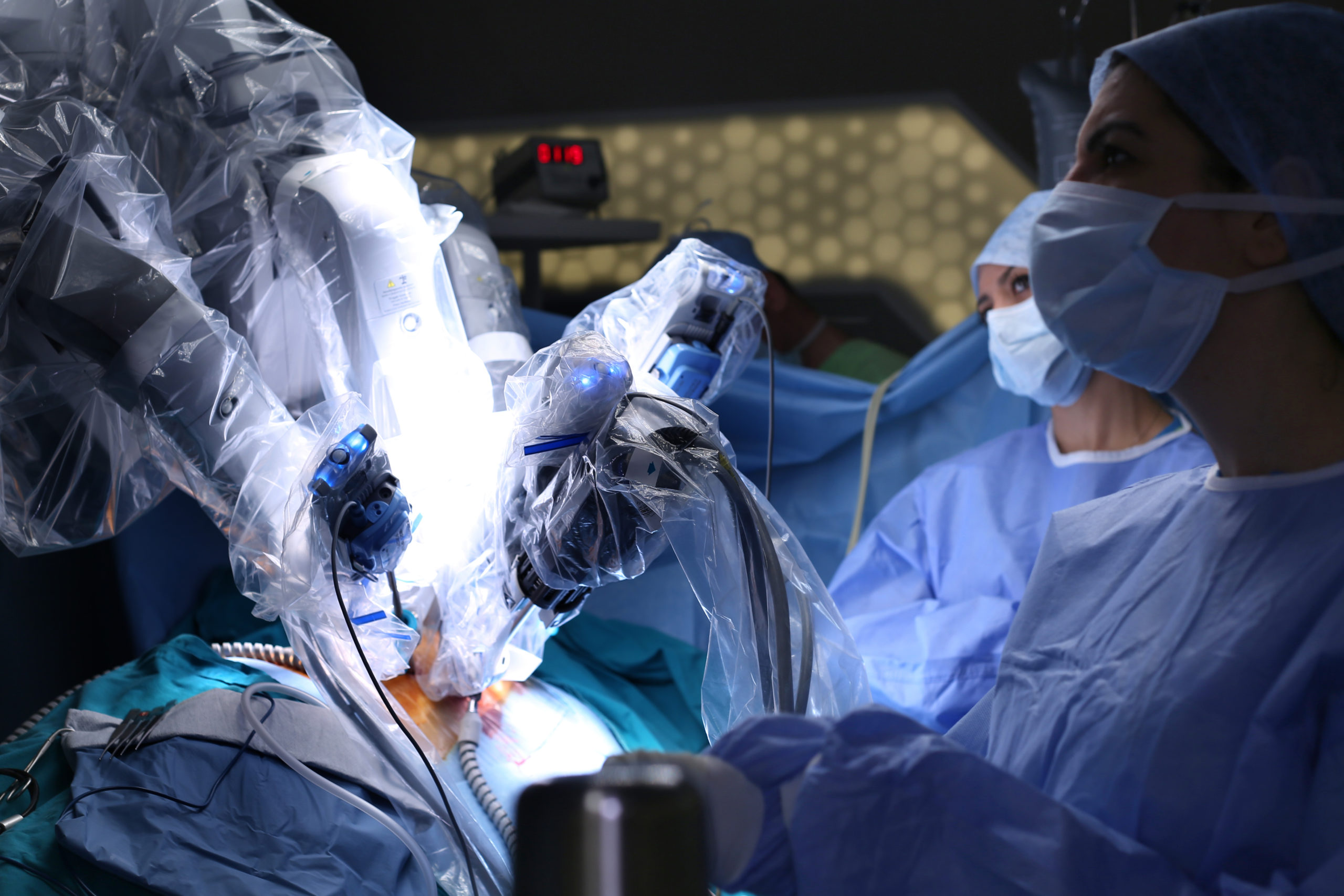
If you have ever considered filing a patent application in the medical field, you might be aware that the law of some countries excludes patent protection for inventions that relate to certain kinds of surgical method. Given the rate of innovation in the surgical robots field, as clear from the increasing numbers of patent filings (recently reported here), an important question for companies in this field is: how are such legal provisions applied to surgical procedures performed or assisted by a robot?
The intention behind the exclusion of surgical methods from patentability is to protect patients by ensuring that clinicians are not restricted in performing a necessary method of treatment, though not all members of the World Trade Organisation have chosen to apply this exclusion. For example, while the Japanese Patent Office (JPO) excludes surgical methods from patentability, the United States Patent and Trade Mark Office (USPTO) does allow patent protection for such methods. However, US law does also permit medical practitioners to perform certain acts that would otherwise constitute infringement where the patent relates to such a method.
Closer to home, the European Patent Office (EPO) interprets the exclusion of surgical methods such that any method of treatment which is claimed in a manner that requires “performing” one or more surgical steps is not patentable. The policy of the United Kingdom Intellectual Property Office (UKIPO) is generally to follow the practice of the EPO in relation to medical methods, so UK patent applications should receive similar treatment in this respect.
For those with experience of software-related patent applications, it is worth noting that this exception differs from the statutory exclusion of computer programs. Under European patent law, only computer programs “as such” are excluded from patentability, and if the subject matter of a claim can be shown to achieve a technical effect, it can meet the requirements for patentability regardless of whether it includes computer program steps. By contrast, a claim to a method of treatment that requires “performing” one or more surgical steps will always be excluded from patentability, no matter the merits of the other features of the claim.
This approach may seem hard-line. At the EPO, a patent application can be refused even if the surgical steps mentioned in the claims are completely commonplace and the innovation lies elsewhere, for example in a composition or device used during the procedure. The EPO’s strict approach is curtailed, however, by the fact that the exclusion applies only to claims in the “method” category that include steps performed directly on the human body. This means that any claim directed to a device, for example a surgical tool, or a composition used in a surgical method, cannot be rejected under the “surgical methods” exclusion, even if defined in functional terms that relate to the surgical steps in which it is intended to be used.
But what about inventions relating to surgical methods performed by a robot, in which the inventive features fall closer to method steps? While the method steps claimed in isolation may not be patentable, the EPO’s guidelines are clear that a claim directed to a data carrier which stores instructions for performing surgical method steps (i.e. the software for controlling a surgical robot to perform a certain procedure) is not excluded.
These limitations mean that, in reality, inventions in surgical robotics can almost always be claimed in such terms that avoid the exception of surgical methods. It is rare that an invention really can be reduced to a set of pure surgical steps – far more often, the underlying innovation lies in the robotic tool itself or a way of controlling aspects of the procedure that are separate from the physical interventions on the body. It will often turn out that these aspects of the invention are the ones most worth protecting anyway; when it comes to enforcing your patent, it will usually be far easier to tell whether a competitor is making and selling devices than it would be to know which practitioners have used such devices to perform a surgical procedure, so a patent that protects the device will be far more effective at protecting your market position.
By way of a case study, consider Neuralink Corporation, founded in 2016 by the renowned Elon Musk. Neuralink has snatched headlines recently with its proposal for an electronic neural implant which, it is claimed, will enable a user to interact with computers and mobile devices directly using the brain. A major obstacle to making this work in reality lies in connecting the implant to the brain in the required manner. Neuralink’s implant interfaces with the brain via a bundle of micron-sized threads embedded at specific locations, and the level of precision required to implant these threads cannot be achieved by the hands of a human surgeon. It has therefore been necessary for Neuralink to develop a new robot adapted specifically to carry out this task.
Neuralink is a vivid example of how a robotic system can make possible a procedure not achievable by conventional modes of surgery. What the Neuralink surgical system achieves is enabling a new surgical procedure to be conducted, but the innovation that underlies this is the robotic tool itself. Because the appropriate tool is a prerequisite for this procedure, a patent that protects it with reasonable breadth would give the proprietor an effective monopoly over the procedure itself – even though a claim directed to the surgical steps would be rejected outright.
In Neuralink’s case, it is to be expected that the company has also sought protection for the implant, in which case Neuralink could effectively obtain a monopoly over the entire system – implant and surgical procedure – by virtue of the exclusive rights to make, sell and use the implant that a patent would confer on it. Protection of the robotic tool would, however, provide a complementary layer of protection in the event that a patent application directed to the chip is refused or is granted in such a form that it is easily worked around. A strong patent for the robot could preserve the company’s monopoly position in that case, since Neuralink would have exclusive rights over the only tool that is capable of implanting the device.
In conclusion, the exception to patentability of surgical methods as applied by the EPO and other patent offices can cause severe problems for applications that are drafted without consideration of this provision. However, the exclusion of patentability can generally be avoided by identifying the underlying innovation and appropriately defining the invention. Approaching the patent application in this way can not only help to avoid the surgical methods exclusion but also lead to a more valuable patent. This should give surgical robotics companies confidence that they can obtain effective protection for their inventions through the European patent system.
If you would like advice on protecting your digital health innovation, please get in touch with an attorney from our MedTech team via medtech@gje.com


